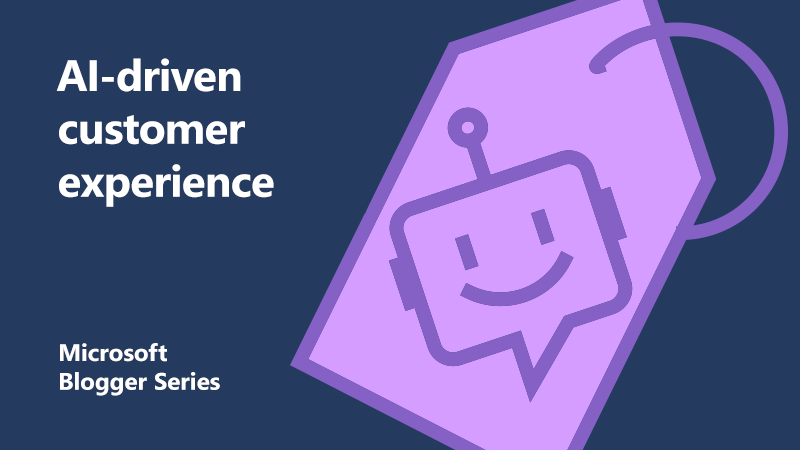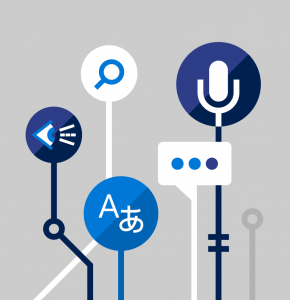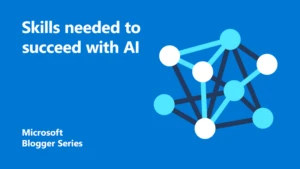
4 components to a successful AI-driven customer experience
 A vital part of being human is how we connect with each other. More and more, we’re relying on technology to foster those connections. Our customers are demanding more connectivity to organisations – whether that’s an ecommerce store, customer service agent, social media, or some other digital experience.
A vital part of being human is how we connect with each other. More and more, we’re relying on technology to foster those connections. Our customers are demanding more connectivity to organisations – whether that’s an ecommerce store, customer service agent, social media, or some other digital experience.
This means that organisations need to be more agile. They’re having to respond quickly to the changing needs of the customer and environment. They need to get to market ever faster, and do so in engaging ways that fit the moment and the mood. Being both proactive and reactive to rapidly shifting consumer behaviour has never been more of a necessity.
How AI can help deliver a stronger customer experience
AI can help organisations use data to drive business insights quickly, make decisions faster, and become more agile. Using AI will also help optimise processes and streamline operations.
We already know that customer and employee experience are intrinsically linked. If we use AI to free up employees time, they can spend it on tasks that provide a more personalised customer experience.
Artificial intelligence is such a vast ocean of a topic, however, that it can be difficult to know where to begin. Here are four key components to consider before getting stuck into your first AI-driven project.
1. Think why, not what
 When you create your AI strategy, switch your mindset. You’re not trying to find a reason to use AI. You’re trying to define the problem and then look at how to solve it. The better the question, the more useful the answer.
When you create your AI strategy, switch your mindset. You’re not trying to find a reason to use AI. You’re trying to define the problem and then look at how to solve it. The better the question, the more useful the answer.
For example, travel businesses that are overwhelmed with customer enquiries may find that a chatbot can help them manage the volume when programmed with a series of FAQs. Supermarkets experiencing an increase in online demand could use AI to learn quickly from changing shopping behaviours, and start to predict new trends to help them tailor the customer experience.
While these are still fairly practical and simple applications of AI and machine learning, notice how it’s about solving a problem instead of wedging a solution in for the sake of it.
2. From tabula rasa to ethical AI
Any AI system starts as a tabula rasa, or a blank sheet. Its efficiency depends on what we teach it to do. AI analyses any data set far more deeply and effectively than we can, but we cannot expect more from it than we give.
This is why when you implement AI, you need to ensure it is ethical, reliable, secure, and fair. It’s incredibly important to test a system periodically (as it learns constantly) against any unwanted outcomes that may result in unintended exclusion or discrimination. You also need to create a set of principles and governance alongside your AI strategy.
3. Consider quantity and quality
Efficient AI learning hinges around human understanding of what constitutes a proper dataset. Generally people think that the bigger the dataset, the higher performance expectations can be. However, it takes both quantity and quality to determine the efficiency of your AI implementation.
For example, if we want an AI application to predict future clothing trends, we need to make sure we combine various dimensions of the historical reference trends (colour, material, pattern, length, etc.). If we want to teach AI to identify trees but we only present birch trees as learning examples, we shouldn’t be surprised when it doesn’t recognise an oak tree.
4. Think of AI as an extension to your team
 One key thing to remember is that AI systems make mistakes. There is no system free from them. So, any application will always require some form of human audit. No action should be left solely to machines.
One key thing to remember is that AI systems make mistakes. There is no system free from them. So, any application will always require some form of human audit. No action should be left solely to machines.
Still, AI is a powerful companion that will help us grow and work smarter. The concept of ‘Human+’ promotes AI as an extension of our skills. We’ve seen examples of this across multiple industries. In football, we’ve seen the benefits of Video Assistant Referee becoming an extra pair of eyes. There are navigation systems that actually empower the geographical senses of drivers and pilots. Da Vinci robots that extend and stabilise surgeons’ hands. And, of course, we’ve seen the benefits of AI driven pre-analysis tools that increase the efficiency of marketing analysts.
Human+ ingenuity
It is ultimately us humans that deliver the true creativity, artistry and innovation that brings true business value. It’s AI’s job to help drive these outcomes, whether it’s using data to provide analytics, optimising and streamlining business processes, or aiding our marketing campaigns to create a more personalised digital customer experience.
Find out more
Read more: How to become data-driven
Develop your skills: Lead with confidence in the age of AI
Download the report: Maximise the AI opportunity
Get in touch: Find out more about Cognifide
Grow your skills and expertise:At the UK Partner Skills Hub
Tools to empower your development team
Watch the on-demand session: Responsible AI panel interview
Read the blog: An intro to AI and the AI Builder
About the author
 Jedrzej is the author of 14 papers, co-author of two books and has a PhD in AI. He has recently authored Cunning Machines, published in March 2020 by CRC Press. This pocket guide to the world of AI explains its main concepts: what does AI really mean, where do we find it, how do scientists try to evaluate it, what are its main limitations, and what future can we expect with it. Jedrzej is a Senior QA Engineer at Cognifide. He is better known to his Twitter followers as Dr. Hawaii (thanks to his fabulous taste in Hawaiian shirts).
Jedrzej is the author of 14 papers, co-author of two books and has a PhD in AI. He has recently authored Cunning Machines, published in March 2020 by CRC Press. This pocket guide to the world of AI explains its main concepts: what does AI really mean, where do we find it, how do scientists try to evaluate it, what are its main limitations, and what future can we expect with it. Jedrzej is a Senior QA Engineer at Cognifide. He is better known to his Twitter followers as Dr. Hawaii (thanks to his fabulous taste in Hawaiian shirts).




